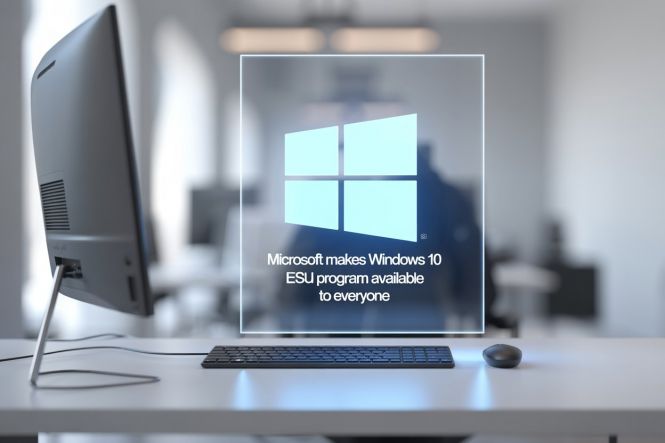 Microsoft makes Windows 10 ESU program available to everyone
Microsoft makes Windows 10 ESU program available to everyone
We have covered the upcoming end of support of Windows 10 in a couple of pieces, with the latest of them, “Windows 10 support ends soon: implications and alternatives,” giving the reasons to upgrade and suggesting alternative operating systems for those who don't want to. Another post, “Microsoft plans to make ESUs for Win 10 a paid service,” reports on the company’s previous intention to sell subscriptions to Extended Security Updates. Looks like there has been a change of plans.
In a recent post to the Windows Experience Blog, Microsoft recapped the AI-driven features in Windows 11, and also mentioned that it opens Windows 10 ESU to everyone interested, not just the participants of the Windows Insiders program. Specifically, the respective section reads:
Starting today, individuals will begin to see an enrollment wizard through notifications and in Settings, making it simple to select the best option for you and enroll in ESU directly from your personal Windows 10 PC.
The post was published on July 22, 2025. This means that if your current OS is Windows 10, and you want to keep it that way, you can now continue using it without compromising security.
Windows 10 ESU program free for everyone: the caveats
According to an earlier (and updated) post to the Windows Experience Blog, there are two caveats associated with free enrollment into the Windows 10 ESU program:
- You have to turn on Windows Backup and sync to the cloud to be admitted free of charge.
- The monthly security updates will be delivered to you at no cost only for a year from the date Windows 10 support ends, i.e., up to October 15, 2026.
Why does Microsoft do that?
As we mentioned in the previous pieces dedicated to this matter, Windows 10 simply doesn’t want to go away. According to Statista, as of June 2025, the share of Win 10 is 48.76%, while that of Win 11 is 47.98% (both figures apply worldwide). This means that starting from October 14, 2025, about half of Microsoft’s customers will become more vulnerable to various attacks, and the degree of vulnerability will only increase. So, seeing that Windows 11 adoption figures are not as good as expected, the company obviously decided to cover its back.



